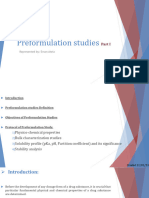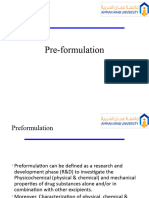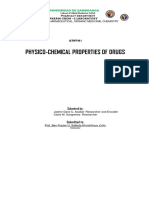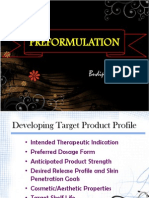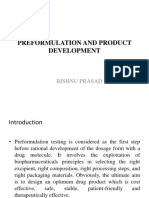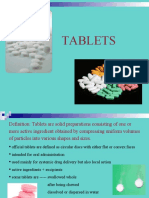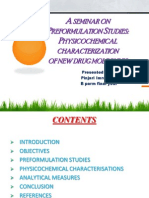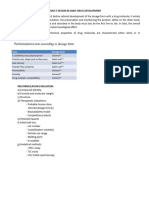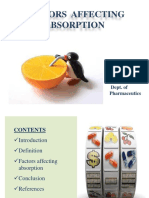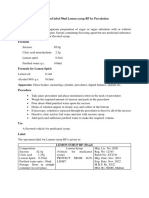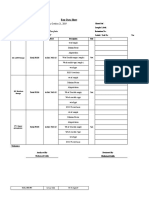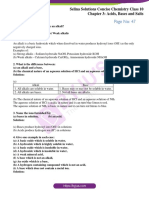0% found this document useful (0 votes)
90 views5 pagesFormulation
Pharmaceutics is the study of formulation, manufacture, stability and effectiveness of pharmaceutical dosage forms. A dosage form is the physical form of a drug intended for administration such as pills, tablets, capsules, liquids, etc. Formulation involves combining an active pharmaceutical ingredient with excipients to produce stable and acceptable dosage forms for patients. Chemical and physical characterization of the drug and excipients is important for formulation development.
Uploaded by
Hafiz Muhammad YousafCopyright
© © All Rights Reserved
We take content rights seriously. If you suspect this is your content, claim it here.
Available Formats
Download as PDF, TXT or read online on Scribd
0% found this document useful (0 votes)
90 views5 pagesFormulation
Pharmaceutics is the study of formulation, manufacture, stability and effectiveness of pharmaceutical dosage forms. A dosage form is the physical form of a drug intended for administration such as pills, tablets, capsules, liquids, etc. Formulation involves combining an active pharmaceutical ingredient with excipients to produce stable and acceptable dosage forms for patients. Chemical and physical characterization of the drug and excipients is important for formulation development.
Uploaded by
Hafiz Muhammad YousafCopyright
© © All Rights Reserved
We take content rights seriously. If you suspect this is your content, claim it here.
Available Formats
Download as PDF, TXT or read online on Scribd
/ 5





